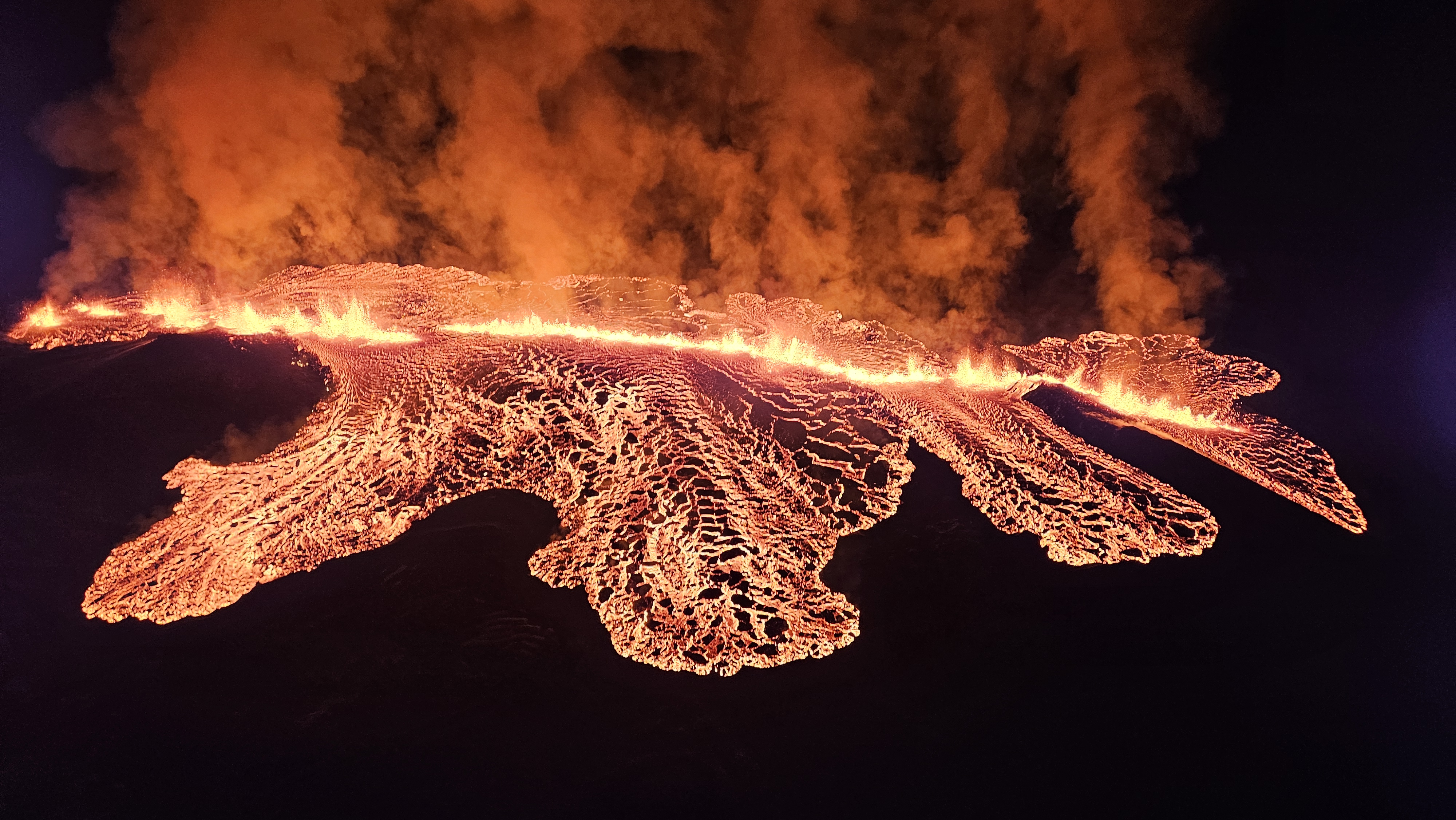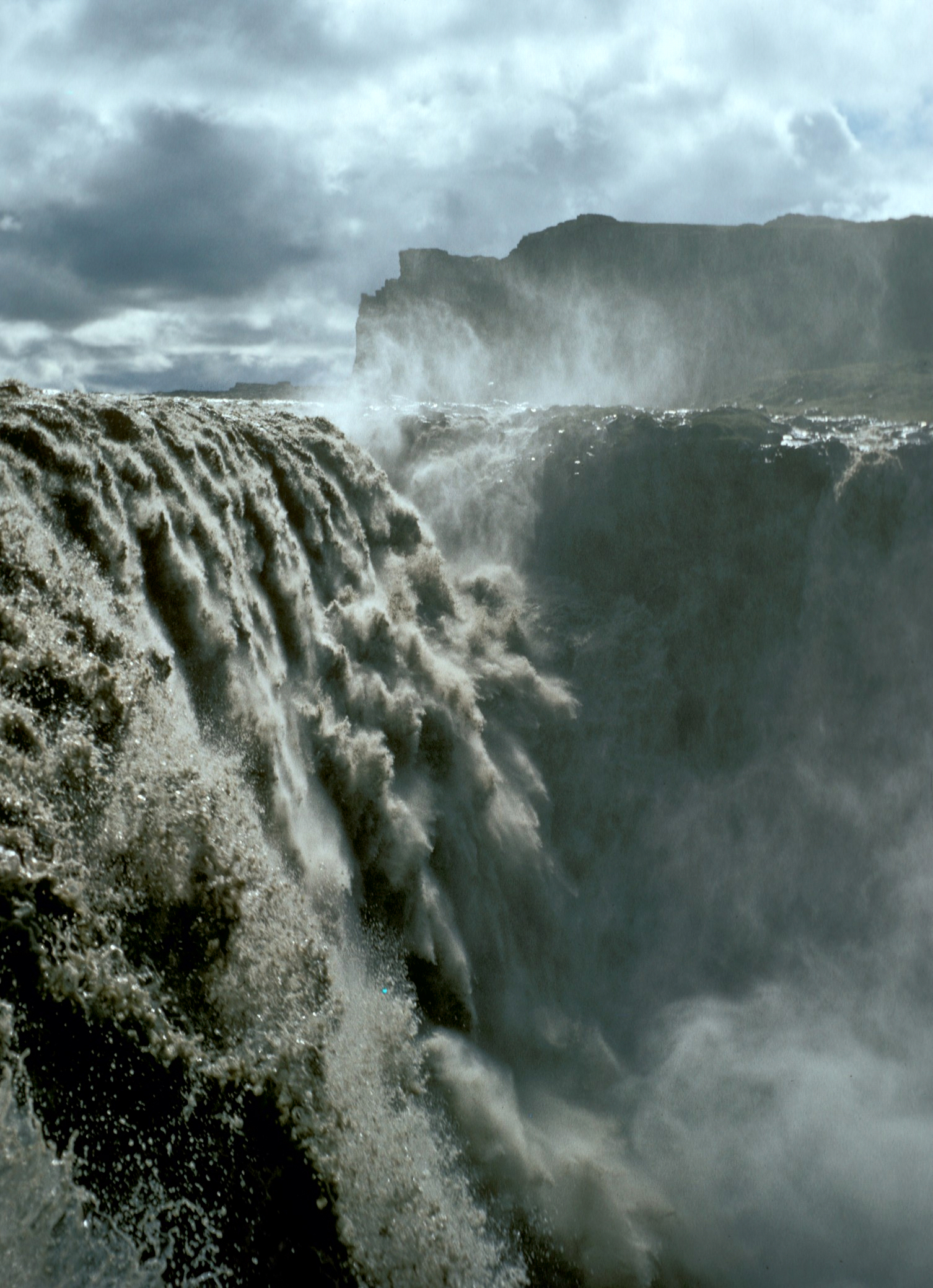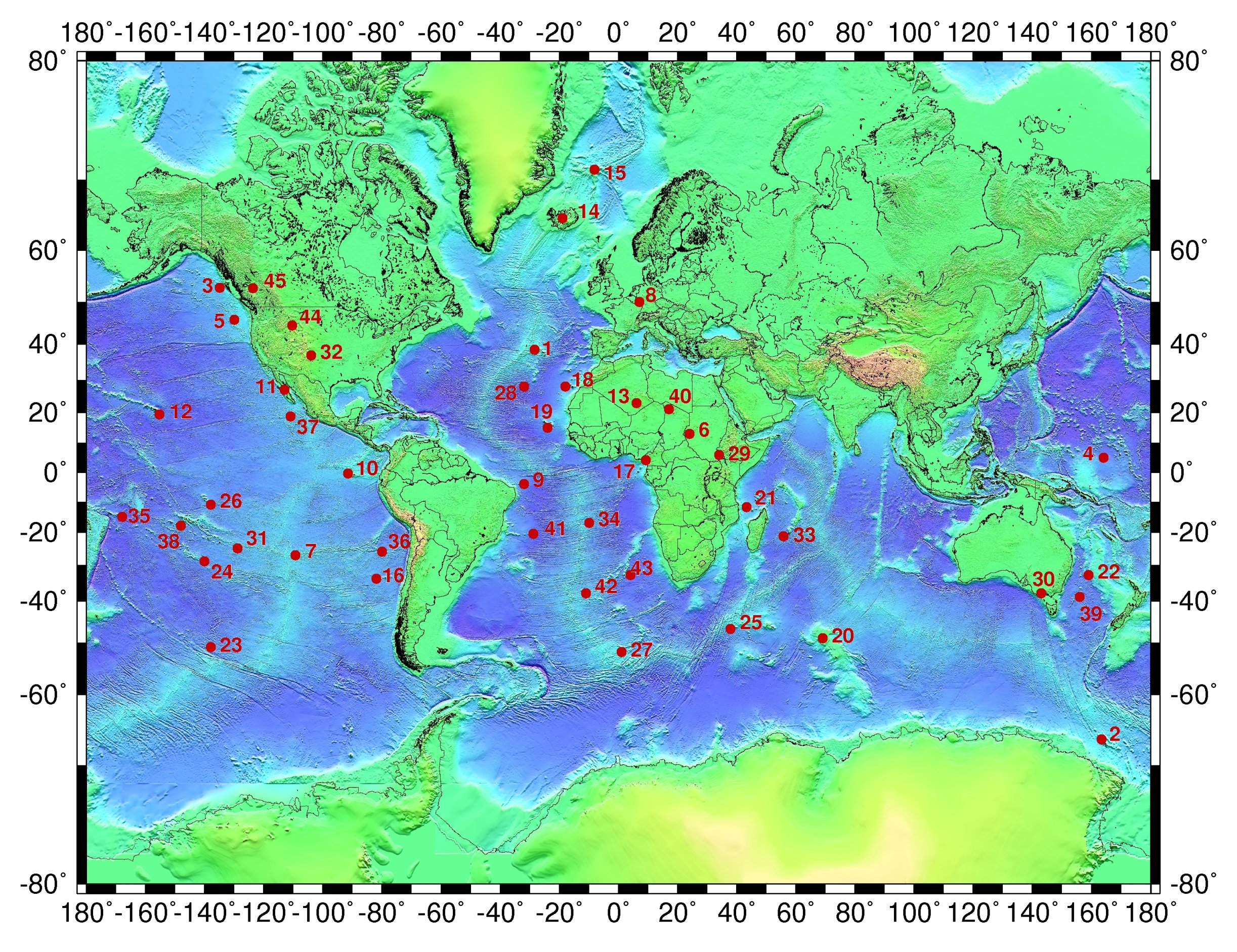|
Sundhnúksgígar
Sundhnúksgígar () or Sundhnúkagígar is a series of volcanic craters east of Eldvörp–Svartsengi in Iceland. They are named after Sundhnúkur, which is a hill just south of Sundhnúksgígar. The craters are aligned in a row called ''Sundhnúksgígaröðin''. The first eruption of the crater row took place about 2000 years ago. There was volcanic activity nearby during the period known as the Reykjanes fires with the last previous eruption being about 1240 CE. In December 2023, as part of the Sundhnúkur eruptions, some craters began to erupt. On 14 January 2024, a second eruption began following seismic activity associated with the area of the Sundhnúksgígar craters. there had been eight eruptions. See also * Geography of Iceland * Geology of Iceland ** Geology of Reykjanes Peninsula * Volcanism of Iceland :''The volcano system in Iceland that started activity on August 17, 2014, and ended on February 27, 2015, is Bárðarbunga.'' :''The volcano in Iceland that erupte ... [...More Info...] [...Related Items...] OR: [Wikipedia] [Google] [Baidu] |
Sundhnúkur
Sundhnúkur () is a volcanic hill, within its associated Sundhnúksgígar crater row and volcanic fissures ( ) in the Svartsengi volcanic system, part of the Reykjanes Peninsula rift zone of Iceland. It is the location of the 2023–2025 Sundhnúkur eruptions. Geology The region has basalt lava shields with the larger ones being tholeiitic and smaller ones being picritic or tholeiitic. The hills are hyaloclastite table mountains or ridges and pillow lava mounds. The previous lava eruption from the Sundhnúkur crater row has been dated at , and was of basaltic aā type. The lava field that erupted prior to 2023 extends north-east from Grindavík in the south with the fissures and Sundhnúksgígar crater row extending at strike of 35°. This takes the fissure system past the older mountains of Hagafell to its east and Svartsengisfell to its west. The crater row is usually now classified as part of the Eldvörp–Svartsengi or Svartsengi volcanic system which is part of the ... [...More Info...] [...Related Items...] OR: [Wikipedia] [Google] [Baidu] |
Eldvörp–Svartsengi
Eldvörp–Svartsengi (); "fire cones–black meadow" in Icelandic also Svartsengi volcanic system) is a volcanic system in the southwest of Iceland on the Southern Peninsula, southeast of Keflavík International Airport and north of the town of Grindavík. Made up of fissures, cones and volcanic craters, it had been relatively inactive for several centuries until 2020, when the first in a series of magmatic intrusions occurred. In December of 2023 the fourth such intrusion culminated in an eruption, with further eruptions in 2024 and 2025. Geography Location Eldvörp–Svartsengi is located in the southwest of Iceland, in the west of the Southern Peninsula, which forms the southwest tip of the country. The Icelandic toponym Svartsengi, literally "black meadow", designates a small valley at the foot of Sýlingarfell. From here, Keflavík and its eponymous international airport are to the northwest, the port town of Vogar is to the north, the port town of Grindavík is t ... [...More Info...] [...Related Items...] OR: [Wikipedia] [Google] [Baidu] |
Reykjanes Fires
The Reykjanes Fires (Icelandic language, Icelandic: ''Reykjaneseldar'') were a series of volcanic eruptions that took place on the Reykjanes Peninsula in south-west Iceland between approximately 1210 and 1240. They caused widespread physical and economic damage, covering large areas of the peninsula in lava and tephra and causing the mass starvation of livestock, as well as a number of deaths of people due to earthquakes. The peninsula's volcanic systems were subsequently dormant for 800 years until a fresh series of eruptions began in 2021, which have been called the New Reykjanes Fires. Geology The Reykjanes Peninsula is a continuation of the mostly submarine Reykjanes Ridge, a part of the Mid-Atlantic Ridge. Its topography was formed by glaciers and volcanism, with basaltic lava fields covering a good part of the peninsula, in between volcanoes of Subglacial volcano, subglacial as well as subaerial origin, namely tuyas, Hyaloclastite, hyaloclastic ridges (tindars), shield v ... [...More Info...] [...Related Items...] OR: [Wikipedia] [Google] [Baidu] |
Volcanism Of Iceland
:''The volcano system in Iceland that started activity on August 17, 2014, and ended on February 27, 2015, is Bárðarbunga.'' :''The volcano in Iceland that erupted in May 2011 is Grímsvötn.'' Iceland experiences frequent volcanic activity, due to its location both on the Mid-Atlantic Ridge, a divergent tectonic plate boundary, and being over a hotspot. Nearly thirty volcanoes are known to have erupted in the Holocene epoch; these include Eldgjá, source of the largest lava eruption in human history. Some of the various eruptions of lava, gas and ash have been both destructive of property and deadly to life over the years, as well as disruptive to local and European air travel. Volcanic systems and volcanic zones of Iceland Holocene volcanism in Iceland is mostly to be found in the ''Neovolcanic Zone'', comprising the Reykjanes volcanic belt (RVB), the West volcanic zone (WVZ), the Mid-Iceland belt (MIB), the East volcanic zone (EVZ) and the North volcanic zone (NVZ). ... [...More Info...] [...Related Items...] OR: [Wikipedia] [Google] [Baidu] |
Volcanic Crater
A volcanic crater is an approximately circular depression in the ground caused by volcanic activity. It is typically a bowl-shaped feature containing one or more vents. During volcanic eruptions, molten magma and volcanic gases rise from an underground magma chamber, through a conduit, until they reach the crater's vent, from where the gases escape into the atmosphere and the magma is erupted as lava. A volcanic crater can be of large dimensions, and sometimes of great depth. During certain types of explosive eruptions, a volcano's magma chamber may empty enough for an area above it to subside, forming a type of larger depression known as a caldera. Geomorphology In most volcanoes, the crater is situated at the top of a mountain formed from the erupted volcanic deposits such as lava flows and tephra. Volcanoes that terminate in such a summit crater are usually of a conical form. Other volcanic craters may be found on the flanks of volcanoes, and these are commonly refe ... [...More Info...] [...Related Items...] OR: [Wikipedia] [Google] [Baidu] |
American Broadcasting Company
The American Broadcasting Company (ABC) is an American Commercial broadcasting, commercial broadcast Television broadcaster, television and radio Radio network, network that serves as the flagship property of the Disney Entertainment division of the Walt Disney Company. ABC is headquartered on Riverside Drive in Burbank, California, directly across the street from Walt Disney Studios (Burbank), Walt Disney Studios and adjacent to the Team Disney – Roy E. Disney Animation Building. The network maintains secondary offices at 77 66th Street (Manhattan), West 66th Street on the Upper West Side of Manhattan, New York City, which houses its broadcast center and the headquarters of its news division, ABC News (United States), ABC News. Since 2007, when ABC Radio (also known as Cumulus Media Networks) was sold to Citadel Broadcasting, ABC has reduced its broadcasting operations almost exclusively to television. The youngest of the "Big Three (American television), Big Three" American ... [...More Info...] [...Related Items...] OR: [Wikipedia] [Google] [Baidu] |
Geography Of Iceland
Iceland is an island country at the confluence of the Atlantic Ocean, North Atlantic and Arctic Ocean, Arctic oceans, east of Greenland and immediately south of the Arctic Circle, atop the constructive boundary of the northern Mid-Atlantic Ridge. The island country is the world's List of islands by area#Islands, 18th largest in area and one of the most List of sovereign states and dependent territories by population density, sparsely populated. It is the westernmost European country when not including Greenland and has more land covered by glaciers than continental Europe. Its total size is and possesses an exclusive economic zone of . Statistics Iceland is an island country in Northern Europe, straddling the Eurasian and North American plates between the Greenland Sea and the North Atlantic Ocean, northwest of the British Isles. Extent (locations outside mainland in parentheses) :North: Rifstangi, 66°32′3" N (Kolbeinsey, 67°08,9 N) :South: Kötlutangi, 63°23′6" N ( ... [...More Info...] [...Related Items...] OR: [Wikipedia] [Google] [Baidu] |
Geology Of Iceland
The geology of Iceland is unique and of particular interest to geologists. Iceland lies on the divergent boundary between the Eurasian plate and the North American plate. It also lies above a hotspot, the Iceland plume. The plume is believed to have caused the formation of Iceland itself, the island first appearing over the ocean surface about 16 to 18 million years ago. The result is an island characterized by repeated volcanism and geothermal phenomena such as geysers. The eruption of Laki in 1783 caused much devastation and loss of life, leading to a famine that killed about 25% of the island's population and resulted in a drop in global temperatures, as sulfur dioxide was spewed into the Northern Hemisphere. This caused crop failures in Europe and may have caused droughts in India. The eruption has been estimated to have killed over six million people globally. Between 1963 and 1967, the new island of Surtsey was created off the southwest coast by a volcanic eruption. ... [...More Info...] [...Related Items...] OR: [Wikipedia] [Google] [Baidu] |
Geology Of Reykjanes Peninsula
The Reykjanes Peninsula ( ) in southwest Iceland is the continuation of the mostly submarine Reykjanes Ridge, a part of the Mid-Atlantic Ridge, on land and reaching from Esja in the north and Hengill in the east to Reykjanestá in the west. Suðurnes (transl. Southern Peninsula) is an administrative unit covering part of Reykjanes Peninsula. A great deal of volcanic activity was occurring in the Reykjanes Peninsula in 2020 and into 2024, after nearly 800 years of inactivity. After the eruption of the Fagradalsfjall volcano on 19 March 2021, National Geographic's experts predicted that this "may mark the start of decades of volcanic activity". The eruption was small leading to a prediction that this volcano was unlikely to threaten "any population centers". Origin The two most important factors for the existence of Iceland, rifting in combination with the Iceland hotspot, were responsible for the existence of Reykjanesskagi. Reykjanes Peninsula originated in a so-called ri ... [...More Info...] [...Related Items...] OR: [Wikipedia] [Google] [Baidu] |
Reykjanes Volcanic Belt
The Reykjanes Peninsula ( ) in southwest Iceland is the continuation of the mostly submarine Reykjanes Ridge, a part of the Mid-Atlantic Ridge, on land and reaching from Esjan, Esja in the north and Hengill in the east to Reykjanestá in the west. Suðurnes (transl. Southern Peninsula (Iceland), Southern Peninsula) is an administrative unit covering part of Reykjanes Peninsula. A great deal of volcanic activity was occurring in the Reykjanes Peninsula in 2020 and into 2024, after nearly 800 years of inactivity. After the eruption of the Fagradalsfjall volcano on 19 March 2021, National Geographic's experts predicted that this "may mark the start of decades of volcanic activity". The eruption was small leading to a prediction that this volcano was unlikely to threaten "any population centers". Origin The two most important factors for the existence of Iceland, rifting in combination with the Iceland hotspot, were responsible for the existence of Reykjanesskagi. Reykjanes Penin ... [...More Info...] [...Related Items...] OR: [Wikipedia] [Google] [Baidu] |
Volcanic Craters
A volcanic crater is an approximately circular depression in the ground caused by volcanic activity. It is typically a bowl-shaped feature containing one or more vents. During volcanic eruptions, molten magma and volcanic gases rise from an underground magma chamber, through a conduit, until they reach the crater's vent, from where the gases escape into the atmosphere and the magma is erupted as lava. A volcanic crater can be of large dimensions, and sometimes of great depth. During certain types of explosive eruptions, a volcano's magma chamber may empty enough for an area above it to subside, forming a type of larger depression known as a caldera. Geomorphology In most volcanoes, the crater is situated at the top of a mountain formed from the erupted volcanic deposits such as lava flows and tephra. Volcanoes that terminate in such a summit crater are usually of a conical form. Other volcanic craters may be found on the flanks of volcanoes, and these are commonly referred to ... [...More Info...] [...Related Items...] OR: [Wikipedia] [Google] [Baidu] |






